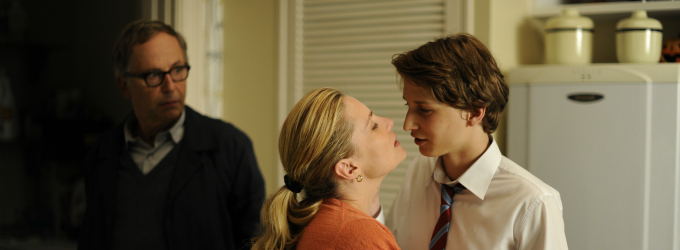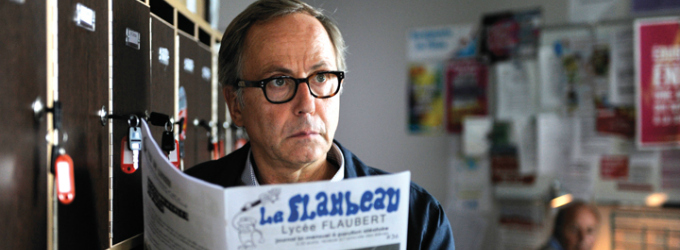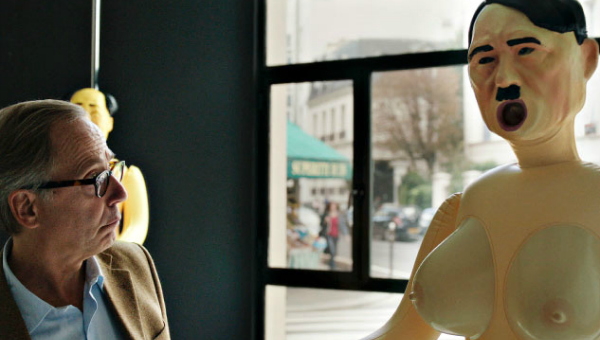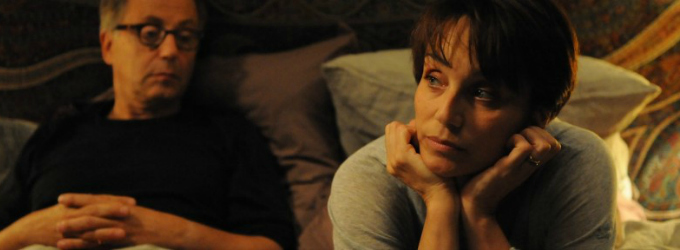 Treading a fine line between creepy and charming, IN THE HOUSE ingratiates itself with the audience before pulling off a nimble series of twists and reversals. This film is Ozon at his most impish, sending up bourgeois lifestyles and pricking his characters’ self-absorbed natures while still acknowledging their humanity.
Treading a fine line between creepy and charming, IN THE HOUSE ingratiates itself with the audience before pulling off a nimble series of twists and reversals. This film is Ozon at his most impish, sending up bourgeois lifestyles and pricking his characters’ self-absorbed natures while still acknowledging their humanity.
We begin with pompous schoolteacher Germain (Fabrice Luchini), a frustrated novelist who’s grown resentful towards his pupils and their lack of interest in the canon of French literature. His interest is piqued when Claude (Ernst Umhauer), one of his pupils, submits a piece viciously dissecting his friend Rafa’s seemingly perfect middle-class family life. Germain quickly takes the calm, self-assured Claude under his wing, nurturing his writing talent even as he eats up each dispatch from Rafa’s house, becoming more absorbed in the “story” as it turns ever more ominous.
… a Tom Ripley-like interloper, fascinated with a blissful lifestyle that he can experience but not possess.
The scenes between Germain and Claude are skilfully directed and acted, as the balance of power between the two slowly shifts. Germain in some way knows that these dirt-dishing reports are wrong, and seeks to rationalise his interest by viewing it as guiding the development of a budding author, passing on his talent to the next generation. The teacher becomes eager for more, encouraging this infiltration of the oblivious household despite himself. Luchini is excellent in this role of the stuffy intellectual able to convince himself of anything, as he casually tosses off post-facto justifications to his unconvinced wife Jeanne (Kristin Scott Thomas).
Claude is an obvious character type for this kind of European thriller: a Tom Ripley-like interloper, fascinated with a blissful lifestyle that he can experience but not possess. Umhauer gifts him with a lack of self-consciousness that makes it totally believable that he could charm both his teacher and his friend’s parents. Contrasted with the detached tone with which he reads out each chapter in voiceover, his outward performance becomes a fascinating exercise in ambiguity.

Ozon, for the most part, adopts a low-key shooting style, showing Germain and Claude as similar lone figures wandering through the slick, modern spaces of the school. The camerawork becomes more loose and fluid when tracking Claude as he explores Rafa’s house, observing him in the same aloof, disquieting fashion. Occasionally surreal vignettes erupt into the film as Germain pops up in the flashbacks to Claude’s experience, critiquing his writing or questioning his version of events as reality becomes increasingly malleable.
The uncanny atmosphere thickens as Rafa’s family acquire depth beyond Claude’s caricatures. The father, Rafa Sr (Denis Ménochet), turns from a macho sport-obsessed buffoon into a neurotic struggling under the pressures of his job. And as Claude gets closer to Rafa’s mother Esther (Emmanuelle Seigner), his attentions deepen into obsession. Claude’s actions begin to have consequences, and Germain wakes to his complicity in events too late to make a difference.
… a late-film twist brings into stark relief his innocence and capacity for disappointment.
Is Claude the villain of the piece? The film flirts with this interpretation, but ultimately resists judging him. Like Max Fischer in Wes Anderson’s RUSHMORE, he’s a teenager viewing the adult world with longing and envy, projecting his own fantasies onto people who won’t fulfil them. His self-absorption and cruel streak count against him, but a late-film twist brings into stark relief his innocence and capacity for disappointment.
Writers, Ozon suggests, are a selfish breed. They take the world around them as raw material for their work, and would rather analyse the motivations of their characters than attend to the feelings of real people. The deficiencies of the mentor-student pair complement each other: while Germain is oblivious, Claude is observant enough to use the trust of others against them.
There’s a comic subplot involving Jeanne’s gallery that mirrors this: it is full of vapid contemporary art that she tries to justify to her husband. During a scene with the gallery’s owners, they “discuss” the new art on display, effectively bamboozling each other into believing that they understand it. Germain contemptuously refers to a bad passage by Claude as “contemporary art catalogue”: words designed to obscure rather than clarify. Art is portrayed as at its best when it’s about honesty, not wish-fulfilment. When Claude tries to remake his subjects in his own image, the project starts to backfire on him.
Ozon closes on a note of uncertainty over whether Claude has learned this lesson. The two former accomplices sit together on a park bench, staring out at a block of flats with scores of people and their stories visible through its brightly lit windows. The camera floats away from Germain and Claude, holding the audience’s gaze on the occupants, making us complicit in the pair’s voyeurism. Beneath the sardonic take on sterile modern culture, the film takes a clear-eyed look at how powerful, enticing and dangerous the creative impulse can be. After all, everyone wants to be the hero of their own story.
httpvh://youtu.be/eegoZpxQCzc



Thank you for that, Ed, and I particularly liked reading your observations about the different styles of camerawork. (Not sure why this film didn’t get the TAKE ONE treatment before, but a fine piece !)
As to the interpretation, not least after a second viewing, I came up with a different take, one that is on my blog (but with BIG spoilers)…
This article was by our fine new writer Jim Moore – Ed’s piece was The Woman In The Fifth, linked above. I’ll go have a look at what you had to say on the film!